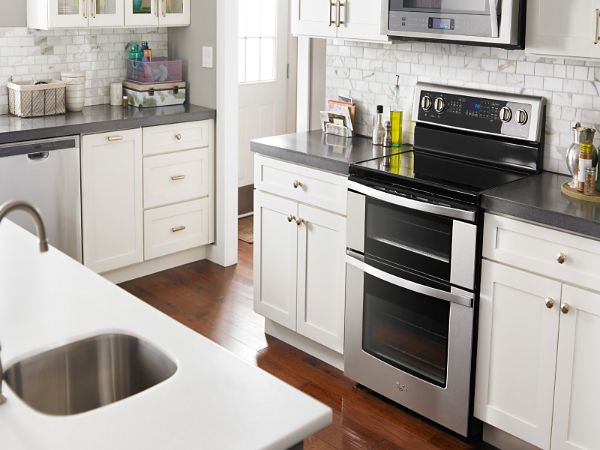When it comes to upgrading your kitchen appliances, selecting the right range is essential for efficient and enjoyable cooking. Two popular choices are convection ranges and induction ranges. While they both offer unique benefits, understanding the differences between them is crucial in making an informed decision.
In this blog post, we will explore the advantages of convection ranges and induction ranges, allowing you to determine which option best suits your cooking needs and preferences.
Table of Contents
Convection Range
- How It Works:
Convection ranges feature a built-in fan and an additional heating element in the oven. The fan circulates hot air throughout the oven cavity, promoting even heat distribution and faster cooking times. This technology is designed to eliminate hot spots and ensure that your dishes are cooked evenly. - Enhanced Cooking Performance:
The even heat distribution in a convection oven allows for faster and more efficient cooking. It can reduce cooking times by up to 25%, allowing you to prepare meals more quickly. Additionally, convection cooking helps to maintain moisture in your dishes, resulting in juicier meats and more evenly browned baked goods. - Versatility:
Convection ranges offer a wide range of cooking options. In addition to conventional baking, roasting, and broiling, they allow you to experiment with multi-rack cooking, where multiple dishes can be cooked simultaneously without flavor transfer. The ability to cook at different temperatures on multiple oven racks expands your culinary possibilities. - Heat Distribution:
Convection ovens excel at distributing heat evenly, ensuring consistent cooking results. This means that regardless of the oven rack position, your food will be cooked uniformly, eliminating the need to rotate pans or adjust cooking times.
Induction Range
- How It Works:
Induction ranges utilize electromagnetic technology to directly heat the cookware. When an induction-compatible pot or pan is placed on the cooktop, an electric current generates a magnetic field, causing the cookware to heat up. Induction technology provides precise control and rapid heating. - Efficiency and Speed:
Induction ranges offer exceptional energy efficiency. They heat up significantly faster than conventional electric or gas ranges, reducing cooking time. Induction technology provides instant heat response and precise temperature control, allowing for quick adjustments while cooking. - Safety:
Induction ranges are known for their safety features. The cooktop surface remains relatively cool to the touch, as heat is generated directly in the cookware. This significantly reduces the risk of burns or accidents. Additionally, induction ranges feature automatic shut-off functions, turning off the heat when no cookware is detected or when the pot or pan is removed. - Ease of Cleaning:
Induction ranges have a smooth and flat glass-ceramic surface, making them easy to clean. Since the cooktop itself doesn’t generate heat, spills and food debris are less likely to burn onto the surface. Cleaning is as simple as wiping down the cool surface with a damp cloth.
Choosing the Right Option
When deciding between a convection range and an induction range, consider your cooking preferences, lifestyle, and budget. If you prioritize faster and more efficient cooking with even heat distribution, a convection range may be ideal for you. On the other hand, if energy efficiency, precise temperature control, and safety are your priorities, an induction range would be a great choice.
Convection Range vs. Induction
| Features | Convection Range | Induction Range |
|---|---|---|
| Cooking Performance | Even heat distribution, faster cooking times | Precise temperature control, rapid heating |
| Versatility | Allows multi-rack cooking, broad range of cooking options | Flexible temperature adjustments, various cooking functions |
| Heat Distribution | Eliminates hot spots, even cooking results | Direct heat to cookware, precise heat control |
| Efficiency | Energy-efficient cooking, shorter cooking times | High energy efficiency, quick heat-up |
| Safety | No open flame, reduced risk of burns | Cool cooktop surface, automatic shut-off functions |
| Cleaning | Regular oven cleaning required, easy stovetop cleaning | Easy-to-clean glass-ceramic surface |
Conclusion
The decision between a convection range and an induction range ultimately depends on your specific cooking needs and preferences. Convection ranges provide even heat distribution, faster cooking times, and versatility in the kitchen.
Induction ranges offer energy efficiency, precise temperature control, and enhanced safety features. Consider your cooking style, the importance of even heat distribution, speed, and efficiency, as well as your budget when making your decision.

